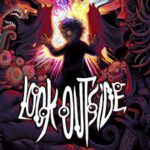The Legend of Zelda is one of the most iconic and enduring video game franchises in history, developed and published by Nintendo. Since its debut in 1986, the series has captivated millions with its blend of exploration, puzzle-solving, and action-adventure gameplay. Centered around the hero Link, the princess Zelda, and the evil antagonist Ganon (or Ganondorf), the franchise has continually evolved to push the boundaries of game design, storytelling, and technology. The Legend of Zelda’s influence extends beyond gaming, shaping modern game development and inspiring countless titles.
1. Origins and Early Games
The original Legend of Zelda released on the Nintendo Entertainment System (NES) in 1986 introduced players to an open-world experience unprecedented at the time. Its innovative use of exploration, inventory management, and nonlinear gameplay set it apart from contemporaries. Early entries like “Zelda II: The Adventure of Link” experimented with side-scrolling and RPG elements, while “A Link to the Past” on the SNES refined the formula with dual-world mechanics and improved graphics. These early titles laid the foundation for a rich universe full of lore and engaging gameplay.
2. Evolution of Gameplay Mechanics
Over the decades, The Legend of Zelda series has continuously reinvented its gameplay. From top-down perspectives to full 3D worlds, the franchise has adapted to hardware advances. Titles like “Ocarina of Time” introduced revolutionary targeting systems and context-sensitive controls that influenced 3D action games broadly. Puzzle-solving remains core, often integrated seamlessly with combat and exploration. The introduction of tools and items such as the hookshot, bombs, and magic spells adds layers of strategic depth, encouraging creative problem-solving.
3. The Role of Storytelling and World-Building
The Zelda series is known for its rich mythology and recurring themes of courage, wisdom, and power. While the plot varies across titles, it generally follows Link’s quest to rescue Zelda and thwart evil forces threatening the kingdom of Hyrule. Each game builds on a timeline with interconnected stories, legends, and characters. World-building is meticulous, with detailed villages, dungeons, and ecosystems that feel alive. Music, environmental storytelling, and character development deepen player immersion and emotional engagement.
4. Major Titles and Critical Acclaim
Among the many entries, several stand out as milestones. “Ocarina of Time” (1998) is often hailed as one of the greatest games ever made for its groundbreaking 3D gameplay and narrative depth. “The Wind Waker” introduced a distinctive cel-shaded art style that polarized but ultimately won over fans. More recently, “Breath of the Wild” revolutionized open-world design with its nonlinear exploration, physics-based puzzles, and survival elements, earning widespread critical acclaim and revitalizing the franchise for new generations.
5. Innovation and Influence on Gaming
The Legend of Zelda has been a trendsetter in game design. Its open-world exploration, dungeon puzzles, and storytelling techniques have influenced numerous other franchises. The series’ emphasis on player freedom and discovery encouraged developers to rethink traditional linear gameplay. Innovations like the targeting system (Z-targeting), dynamic weather, and realistic physics in “Breath of the Wild” set new industry standards. The franchise continues to inspire game developers worldwide.
6. Art, Music, and Audio Design
The visual and auditory identity of The Legend of Zelda is distinct and memorable. The series employs varied art styles ranging from pixel art and realism to cartoon-like cel shading, each chosen to suit the game’s tone. Composer Koji Kondo’s iconic melodies, such as the main theme and “Zelda’s Lullaby,” are deeply embedded in gaming culture. Music dynamically adapts to gameplay scenarios, enhancing emotional moments and exploration. Sound design further supports immersion, from ambient noises to combat effects.
7. Challenges and Criticisms
Despite its successes, the franchise has faced challenges. Some entries received mixed reactions due to changes in art style or gameplay direction. For example, “Spirit Tracks” and “Skyward Sword” divided fans with their motion controls and narrative pacing. The high expectations for each new release also put pressure on developers. Additionally, the complexity and length of some titles can be daunting for newcomers. Balancing innovation with tradition remains an ongoing challenge for the series.
8. The Fan Community and Cultural Impact
The Legend of Zelda has cultivated one of the most passionate fan communities in gaming. Fans create extensive fan art, music covers, cosplay, and fan theories that celebrate and expand the franchise’s universe. Annual fan events and speedrunning communities thrive around Zelda titles, showcasing the series’ enduring appeal. Its influence reaches beyond games, inspiring books, comics, and even theatrical performances. The franchise has become a cultural icon representing adventure and heroism.
































